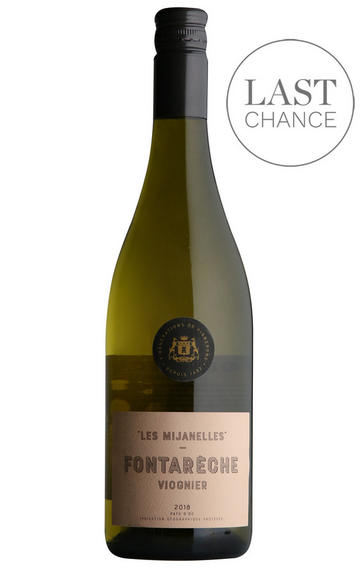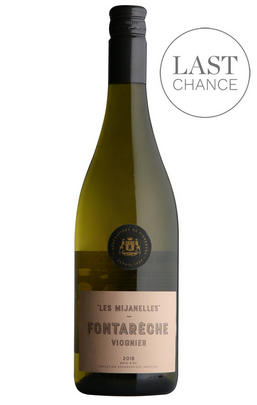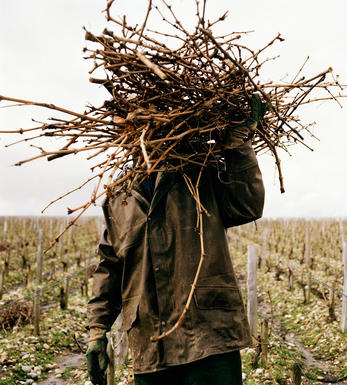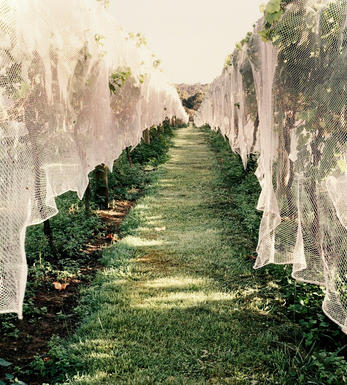
2018 Domaine Fontarèche, Les Mijanelles, Viognier, Pays d'Oc, Languedoc- Roussillon

About this WINE

Chateau de Fontareche
Fontarèche is one of the oldest vineyards of the Languedoc , with some of the plantings dating back as far as 1350. In 1682, the Mignard family purchased Château Fontarèche. Today, nine generations on, the family Lamy own and run the estate, with chief winemaker Vincent Dubernet at their side.
The 160 hectares of vineyards have a wide range of soil types, making it possible to grow a diverse number of grape varieties: Syrah, Grenache, Mourvèdre, Picpoul Rouge, Merlot, Cabernet Sauvignon, Alicante Bouschet and Caladoc, as well as the white Macabeu, Chardonnay, Viognier, Vermentino, Colombard, Roussane and Grenache Blanc.
Eleven hectares have been fully converted into organic vineyards.

Corbieres
A vast (ie the largest in Languedoc) and consequently oft-misunderstood appellation, Corbières covers over 12,000 hectares in the Pyrenean foot-hills, with a variety of soils and micro-climatic influences. In recognition of this diversity, the appellation was subdivided in the 1990s into 11 so-called terroirs, including Montagne d'Alaric, Lagrasse, Lézignan, Boutenac, Fontfroide, Sigean, Durban, Saint-Victor, Quéribus, Termenès and Serviès. The central limestone vineyards of Boutenac are deemed to be the best of these, and thus have their own sub-appellation.
On a terrain this extensive and this varied, four separate topographical zones may be identified: the one in the west, exposed to the cooling Atlantic influence; the coastal zone to the east, influenced by the warm Mediterranean climate; a central mountainous zone in which the Fitou appellation is also located; further north, based around the Montagne d'Alaric, the landlocked enclave which produces wines not dissimilar to those in the neighbouring Minervois.
Corbières wines have had a somewhat undeserved reputation for rusticity, and quality can admittedly still be somewhat mixed. The best examples, however, combine the concentration and herbal richness that can come from old-vine Carignan, especially when married to the so-called 'improving varieties' such as Syrah, Grenache and Mourvèdre.

Viognier
A white grape variety originating in the Northern Rhône and which in the last ten years has been increasingly planted in the Southern Rhône and the Languedoc.
It is a poor-yielding grape that is notoriously fickle to grow, being susceptible to a whole gamut of pests and diseases. Crucially it must be picked at optimum ripeness - if harvested too early and under-ripe the resulting wine can be thin, dilute and unbalanced, while if picked too late then the wine will lack the grape's distinctive peach and honeysuckle aroma. It is most successfully grown in the tiny appellations of Château-Grillet and Condrieu where it thrives on the distinctive arzelle granite-rich soils. It is also grown in Côte Rôtie where it lends aromatic richness to the wines when blended with Syrah.
Viognier has been on the charge in the Southern Rhône and the Languedoc throughout the 1990s and is now a key component of many white Côtes du Rhône. In Languedoc and Rousillon it is increasingly being bottled unblended and with notable success with richly fragrant wines redolent of overripe apricots and peaches and selling at a fraction of the price of their Northern Rhône cousins.


Buying options
Add to wishlist
Description
This is a really vibrant example of Languedoc Viognier with a ripe nose of peach, apricot and honeysuckle aromas. Whilst classically textural and rich, the palate is well balanced by refreshing levels of acidity and a pithy almond skin bitterness on the finish. This is a deliciously fresh, unoaked white that will pair especially well with seafood or mild curries. Ready to drink.
wine at a glance
Delivery and quality guarantee